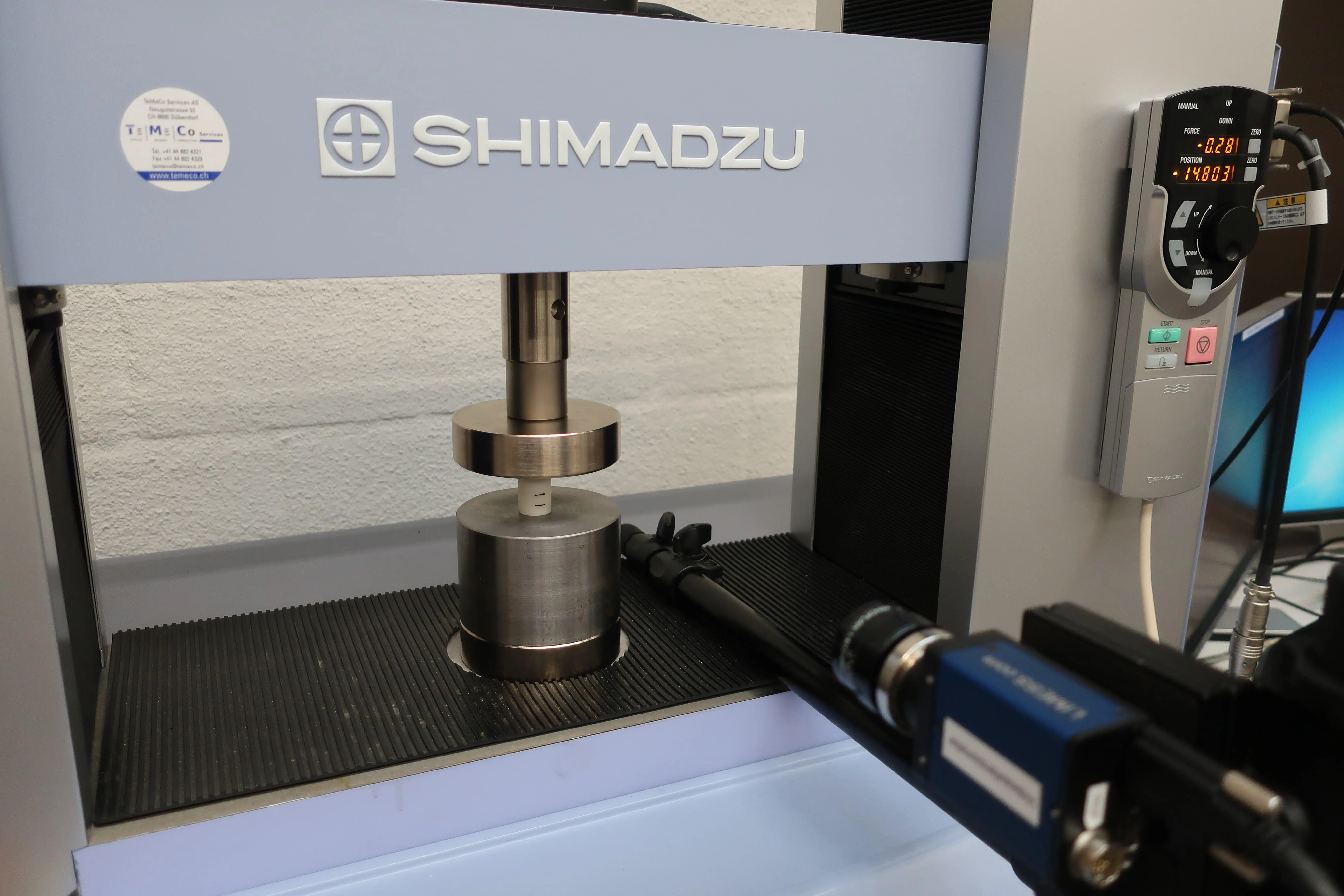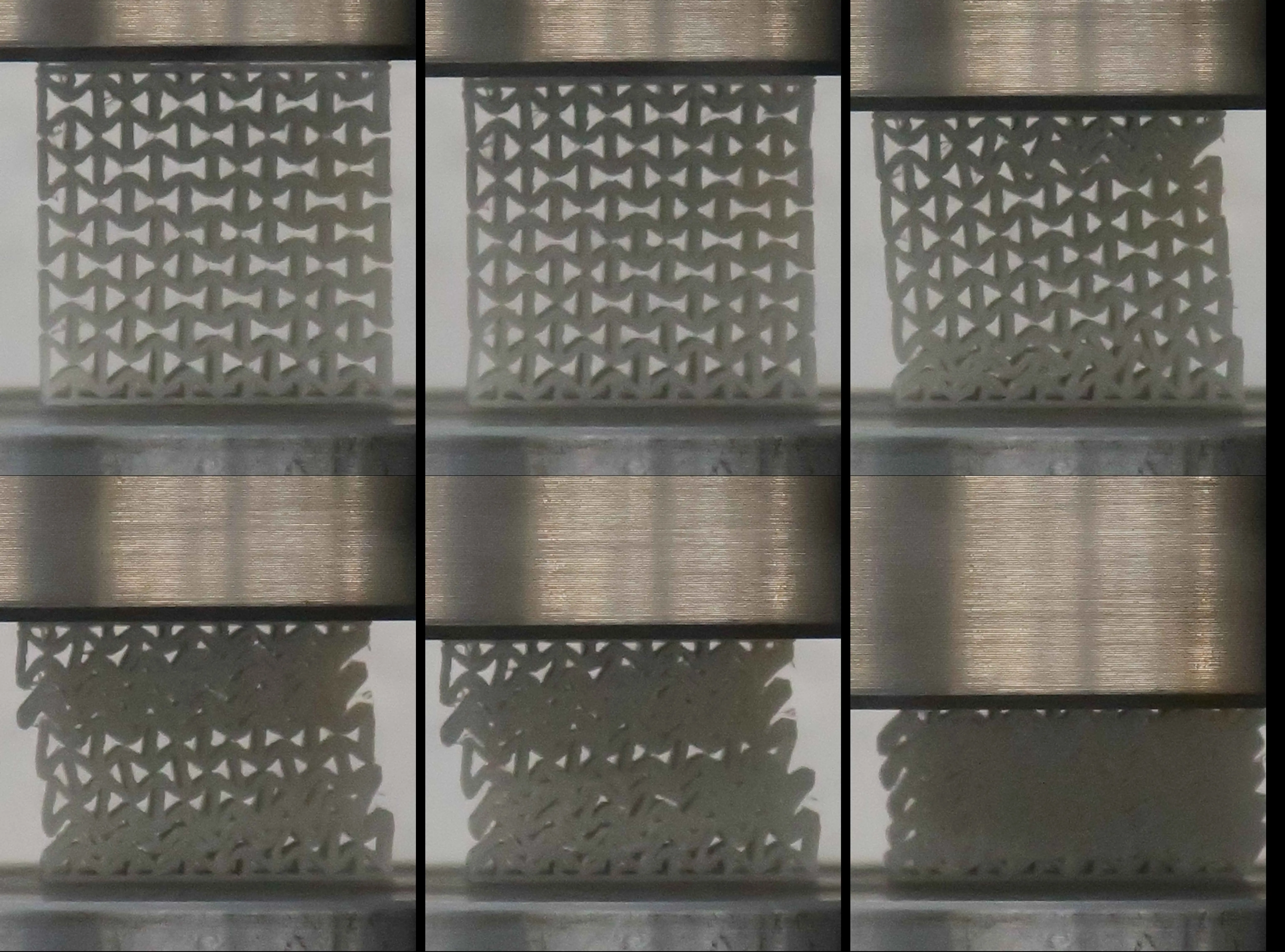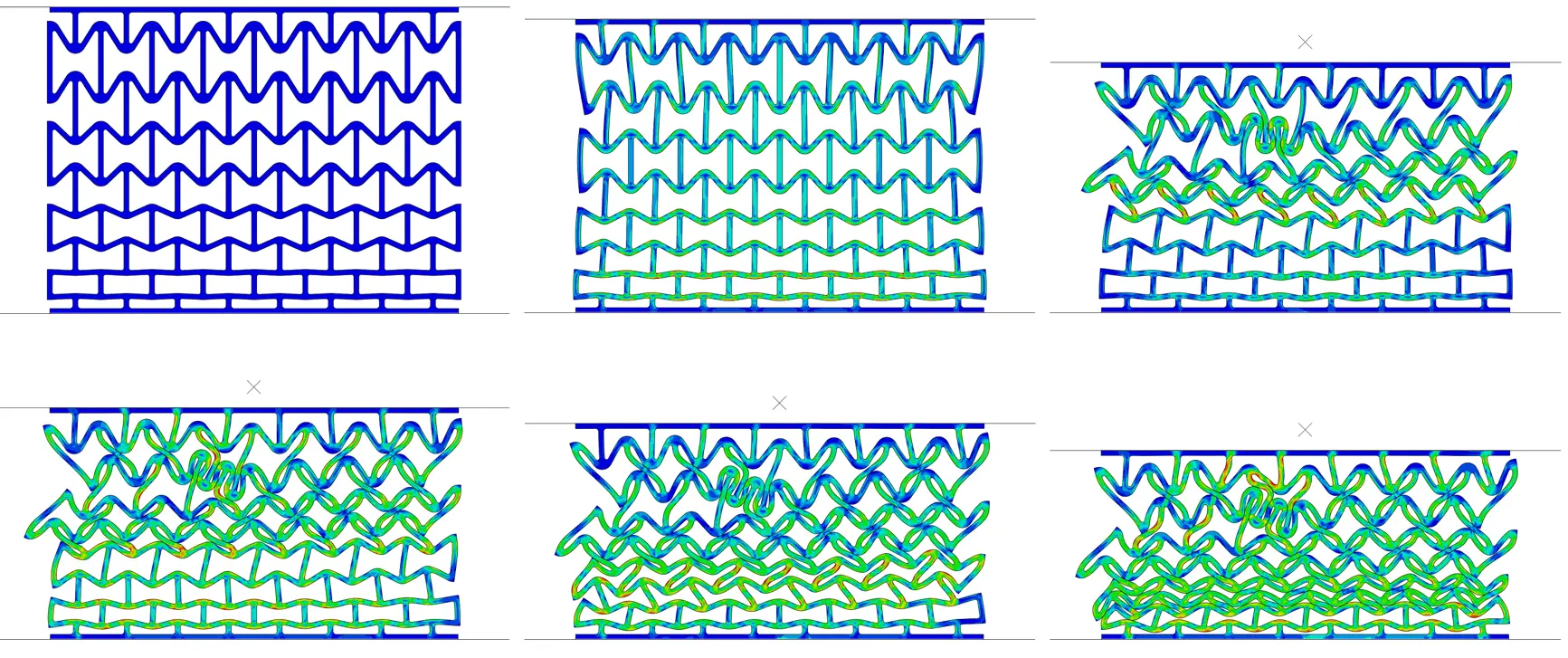Flexible structures from the 3D printer
3D printing is already widespread in the USA and is also becoming increasingly important in Europe. For Florian Bärtsch, the topic was therefore ideal to work on as part of his Double Degree Master's programme at Washington State University. He developed an energy-absorbing structure from the 3D printer.

Energy-absorbing structures are used in helmets, for example. Today, foam is still the most common material for this. In order to minimise the risk of injury in the event of an impact, however, cell structures from the 3D printer could also be considered as an alternative in the future. How such structures should ideally be constructed is still the subject of research. "This structural-mechanical problem interested me," says Florian Bärtsch about his Master's thesis. "With foamed materials, the cell structure is not defined as it is in 3D printing, where we can create artificial structures to absorb the different impact speeds as best as possible."
Wider instead of narrower

Thanks to 3D printing, so-called metamaterials can be designed and manufactured in such a way that the material properties of the manufactured structure deviate from the properties of the base material. Among other things, the Poisson's ratio can be changed in this way. This describes the elongation of a material transverse to the direction of loading. If the Poisson's ratio is below zero, it is called an auxetic material. "If you pull on a rubber band, it becomes longer, but also narrower. With auxetic material, the opposite happens, so it becomes wider," explains Florian Bärtsch. "Auxetic materials are known for their indentation resistance and are therefore particularly suitable for energy-absorbing applications." With this in mind, the Master's graduate has developed an auxetic cell structure and optimised it for different impact speeds.
"If you pull on a rubber band, it becomes longer but also narrower. With auxetic material, the opposite happens, so it becomes wider."
Florian Bärtsch
Structural dynamic modelling
As part of his Master's thesis, Florian Bärtsch used the widely used Fused Filament Fabrication (FFF) as an additive manufacturing process to print the cell structure from plastic. The choice of base material fell on the plastic acrylonitrile-butadiene-styrene (ABS) because it can be used to print fine structures with a small nozzle. In a first step, the Master's graduate conducted tensile and compression tests with different strain rates on FFF-printed samples. "This enabled me to create a strain rate-dependent material model for the plastic ABS for the structural dynamic modelling of the auxetic structure," says Florian Bärtsch.
Experiments and simulations

Based on his material model, Florian Bärtsch examined the auxetic structures with different angles of incidence in a simulation. Based on these results, he was able to optimise the structures for impacts with different velocities. "The results of the simulation agree well with the compression tests in the elastic and unstable range," says the Master's graduate about the results.
Contribution to research
Due to the limited number of tests within the scope of the master's thesis, the dynamic behaviour could not be conclusively determined experimentally. "Whether these auxetic structures can actually produce better absorption behaviour for impacts at different speeds still has to be tested in further investigations," says the graduate. With his work, Florian Bärtsch has nevertheless gained new insights for research, on the basis of which bicycle and motorbike helmets could one day become even safer.